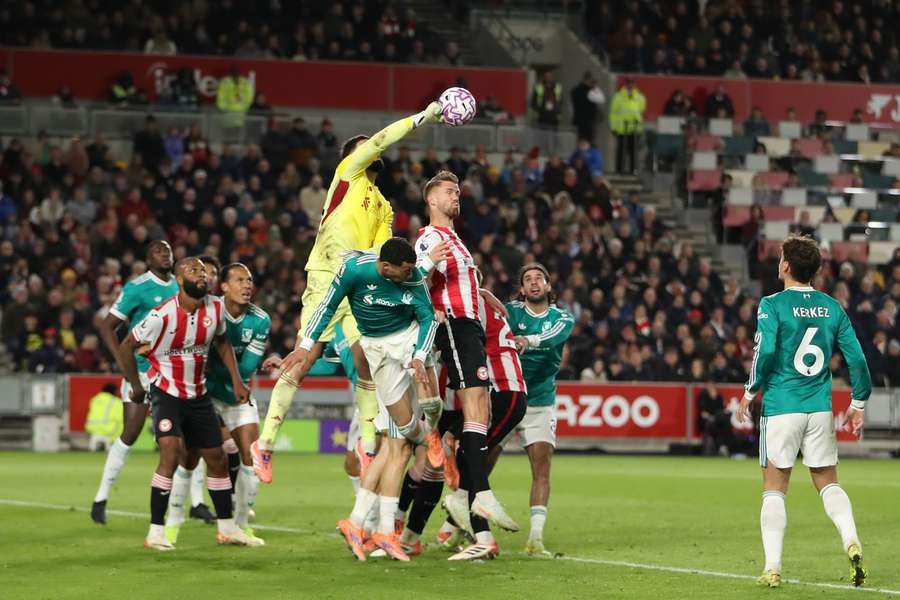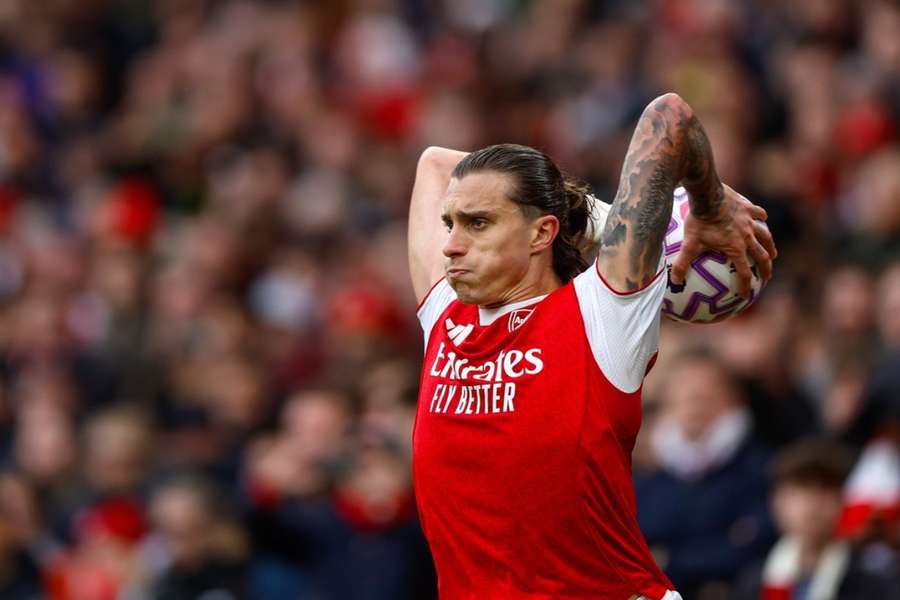It used to be a part of a football game that happens so often during the 90 minutes that many people don’t even think about it. The ball rolls over the line, a player grabs it and quickly throws it back on the pitch. No big deal.
In recent years, as football coaches, analysts and specialists started diving into tinier and tinier details of the game to make their team a little bit better, the perception of the throw-in has changed.
What used to be a throwaway part of the game (pardon the pun) is now specifically trained, analysed and utilised as an offensive weapon. A set-piece that, if done well, can be as dangerous as a well-placed corner or free kick.
In the Premier League alone, long throws into the box went from around 1.5 per game in the previous nine seasons all the way to 4.1 per game this campaign, according to data by Opta. 11 goals were scored from this situation in the 110 league games played so far - so to put it simply, every 10 matches, somebody scores from a long-throw in.
But going long is not the only choice. "There are two types of throw-ins: long throw-ins, which can resemble corner kicks and require a world-class throw-in taker, and fast and clever throw-ins, which occur across the pitch and are more like semi-open play," says Thomas Gronnemark, who agreed to speak to Flashscore about the nitty-gritty details of a proper throw-in.
Gronnemark, a former sprinter, basketball player and bobsledder by the way, set the Guinness World Record for the longest throw-in (51.33 meters) and has been coaching this very specific part of the game for the better part of two decades.
Most notably, he spent five years on Liverpool’s coaching staff, handpicked by Jurgen Klopp. The iconic manager identified the throw-ins under pressure as a weak point of his team in his second season at Anfield and personally called the Danish expert to join his team.
"If you get the ball fast from a throw-in, you have about 15-20 seconds of space creation time, and creativity and decision-making become crucial,” Gronnemark explains.
"When teams lose possession after a throw-in, commentators and fans usually just accept it, but losing the ball this way can be just as important as losing it in open play. With 40–60 throw-ins per game, this is a very significant aspect of football, not a small detail. Improving throw-ins can have a big impact on results."
Not just for the sake of it
With long throw-ins becoming more and more popular, many pundits have pointed out that a quick throw-in can still be even more effective. When you go long, you take time for everyone to take their position, for the run up; with a quick throw, you can attack an opponent whose defence might not be back in proper shape yet.
But as always, more context is needed. "A quick throw-in can be effective, but the most important part is where you throw the ball and the spatial awareness of the players. The worst thing is throwing quickly into a high-pressure zone," Gronnemark says.
"The magic isn’t speed alone - it’s the decision-making, knowing when the situation calls for quickness, and when to hold and wait for openings. Top throw-in teams are coached in this approach, learning through drills to create space and maximise opportunities."

A long throw-in, when properly done, can be an offensive weapon as good as a well-taken corner. The keys to success are similar - a few good "target players" who excel at heading the ball, several strategic variations for the routines you attempt, and a world-class taker. Or thrower, in this case.
“A good one can throw the ball at least 34 meters,” Gronnemark says. "Many teams fail because their throwers don’t have enough distance or options. When you can only reach the edge of the small box, your chances decrease, and you have fewer tactical variations available.
"With longer throws, you open up more space for strategies and make it harder for defences. The longer your throw, the more potential targets and tactical flexibility you have,” he adds.
It’s the tactical variety that many teams still think to get wrong. "They just throw long for the sake of it, just to get nearer to the box. Teams look at data and see higher success rates for long throws near the penalty area, so they try it. But without mastery of space creation and strategy, long throws aren’t always effective," Gronnemark insists.
"There needs to be strategy, skill and creativity. The long throw-ins must be approached with proper training, not just as a shortcut. If you’re not world-class at long throw-ins, work harder at creating space," the Danish expert adds.
Observe space
More and more teams explore long throw-ins as an offensive option, but it seems they still struggle to defend them. Unlike with corners, goalkeepers seldom come out to punch or catch the ball, for example. That might be caused by the target areas being even more crowded in a smaller space. "If they go into an area with six or seven players and miss, the risk of conceding is huge," Gronnemark says.

As the coach explains, defending long throw-ins is about more than just marking your man. It’s about closing down pockets of space: "Defenders need to collaborate to cover small spaces attackers try to exploit when moving for a flick-on. The skill lies in recognising and closing gaps in real-time, not just marking. Teams need space-observing and space-closing abilities for effective defence."
Those who like to study the rules of the game might point out that there is a rule teams haven’t yet exploited - you can’t be offside from a throw-in. Gronnemark doesn’t seem that changing anytime soon.
"The absence of offside opens the game up, makes it more creative and lively. Removing this expectation would make it less entertaining for fans," he believes.
Listen and learn
Speaking of less entertaining, some old school football fans might argue that dissecting smaller and smaller details of their favourite game sucks the fun out of it. And that even the players are getting overloaded with information.
Go to any club playing at a high level, and you will see that their staff has as many people as the squad itself, if not more. There seems to be a specialist for every aspect of the game - and then you add in a throw-in coach too?!
"I understand this view, but from my experience, players are usually motivated by throw-in coaching," Gronnemark argues.
In the end, they can take it as a game - don’t you want to be the player who can throw the farthest? - and most importantly, they see the results. When Gronnemark joined Liverpool, they went from perennial contenders to Champions League winners.
Of course, that wasn’t just down to throw-ins. But it was one of the factors Jurgen Klopp felt they needed to improve.
"Jurgen identified throw-ins under pressure as a weakness. When he introduced me to the team, he explained to them directly why he brought me in, what I can help with, and showed his confidence in me. That’s how players immediately trusted me," Gronnemark remembers.
"Communication and buy-in from leadership are fundamental to creating motivated squads for specialist training."
Gronnemark believes that one of Klopp’s key qualities is something many others in football and outside of it can learn from: "He’s not just an ambitious, charming, humorous manager, but also a great listener. He gave me complete freedom to coach throw-ins and analyse the team. He was open to ideas and wasn’t afraid of losing control when someone else had expertise.
"Being curious and open is how you improve, and that’s what working with Jürgen Klopp taught me."

